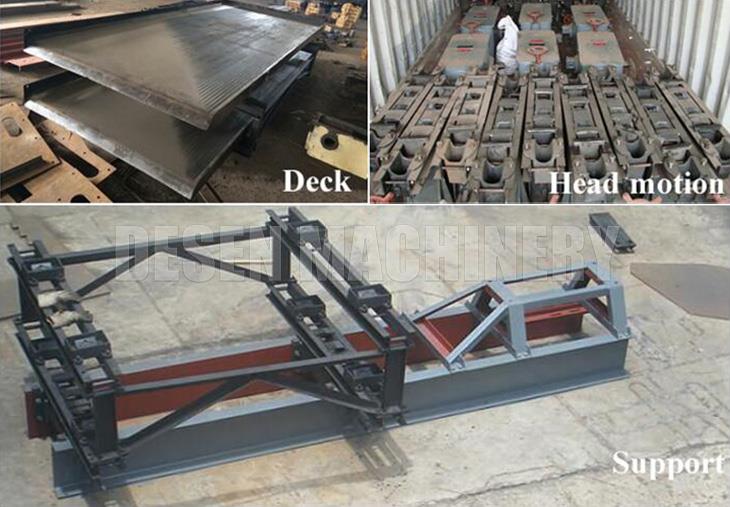How to Fine-Tune Your 6S Shaking Table for Optimal Mineral Processing
The 6S shaking table is a cornerstone in mineral processing, renowned for its efficiency in separating minerals based on specific gravity. Comprising a bed, frame, and transmission box, these tables are typically constructed with glass fiber reinforced plastic (GFRP) beds for durability and corrosion resistance. The bed dimensions, often around 4.5 meters long and 1.85 meters wide, contribute to a substantial effective mineral processing area.
The Importance of Shaking Table Speed
The speed at which a 6S shaking table operates significantly impacts its efficiency. By adjusting the motor speed and gear ratio, operators can fine-tune the table’s vibration frequency and amplitude. These parameters directly influence the separation of minerals. For instance, higher frequencies are generally more suitable for finer particles, while greater amplitudes are better suited for coarser materials.
Methods for Adjusting Shaking Table Speed
-
Manual Adjustment:
- Simplicity: This method involves manually rotating a handwheel on the gearbox.
- Ease of use: It’s straightforward and doesn’t require specialized technical knowledge.
- Limitations: Precision may be limited, and adjustments can be time-consuming.
-
Electronic Adjustment:
- Precision: Electronic controls offer precise adjustments of vibration parameters.
- Automation: They can be integrated into automated control systems.
- Complexity: Requires a deeper understanding of electrical systems.
Key Considerations for Adjustment
- Particle size: Adjust vibration parameters based on the size of the particles being processed.
- Mineral properties: Different minerals have varying specific gravities, requiring tailored adjustments.
- Feed rate: The rate at which material is fed onto the table can impact separation efficiency.
Best Practices for Shaking Table Adjustment
- Start with a baseline: Begin with the manufacturer’s recommended settings.
- Make small adjustments: Gradually increase or decrease speed to avoid overshooting.
- Monitor performance: Continuously assess the quality of the concentrate and tailings.
- Document settings: Keep a record of successful settings for future reference.
Conclusion
The 6S shaking table is a versatile tool in mineral processing, but its effectiveness hinges on proper speed adjustment. By understanding the relationship between vibration parameters and mineral separation, operators can optimize their processes. Whether you prefer the simplicity of manual adjustment or the precision of electronic controls, the goal remains the same: to achieve maximum recovery of valuable minerals.
Whatsapp:+86 133 1927 7356
Email:[email protected]



